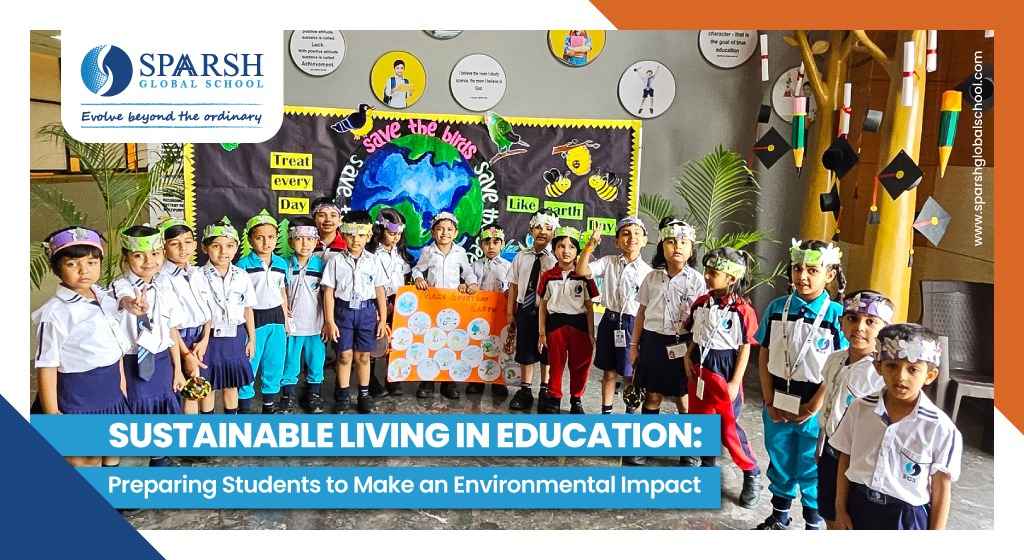The increasing awareness amongst the global population about environmental issues indicates the need for promoting sustainable development through education. Academic, social and ethical responsibilities are inherent parts to the learning of the environment. Environmental education consists of factual information, skills and belief systems that will prepare future generations to confront environmental challenges. The inclusion of environmental education in school curriculum can encourage the notion of creating empathetic and conscientious citizens who will strive to save our world.

Comprehending Environmental Education
Environmental Education, EE for short, is a systematic process that aims at initiating people into the understanding of the environment and its significance. This strategy not only enables understanding of knowledge from books, but also enables the application of such knowledge within various circumstances to foster self-development. It provides students with the concepts of sustainability. The focus areas of their lessons are climate change, environmental protection, pollution, energy and natural resources, human activity and its effects on the environment and measures in place to counter these effects.
The Significance of Environmental Education
1. Developing Critical Thinking and Problem-Solving Skills: An advantage of integrating EE into classrooms is that it enhances the evaluation skills of students. Deforestation and global warming are real life issues which require understanding and resolution. Problem solving is one the essential skill sets in this field.
2. Fostering Conscientiousness and Accountability: When students are exposed to what is happening to their environment, they appreciate their role and responsibility better. Thus, when the child understands what happens to the planet as a result of his actions, the child becomes responsible and learns to live sustainably. Recycling programs, water conservation initiatives and energy efficiency initiatives in schools are all excellent examples of this idea in action.
3. Empowering Future Green Professionals: Examination of the areas of sustainable development will lead to identification of more jobs in environment science as well as other green sectors. Global innovations, appropriate consumer practices, the existence of laws and policies affecting the environment as well as the scientific study of the environment are among the topics which students’ study in learning institutions that embrace environmental education. They help improve the economy and stop society from being detrimental to the environment for life.
Integrating Environmental Education in Schools
Successful integration of environmental education requires a multi-faceted approach:
1. Hands-on Activities: Experiential lessons are some of the most vital lessons taught to students. For instance, going on exciting field trips to the natural reserves, cleaning up projects in neighbourhoods or time spent in school gardens allows students to apply theory into practice. For instance, these activities translate to holding a biology class on ecosystems in nature in place of a classroom.
2. Interdisciplinary Learning: Environmental education can also be delivered outside the science subjects. The issue of ecology can be integrated in many topics in different subjects, for instance, the effects of environmental calamities on historical events can be a good area to discuss in social studies, while estimation of carbon footprint could be part of mathematics. Teachers find it useful to get students to appreciate how sustainability cuts across all disciplines.
3. Involvement in Sustainability Initiatives: Schools should become role models by practising sustainable designs and functionalities. Measures like putting up solar panels, decreasing the usage of plastics or recalculation of composting programmes signify a resolve that students see and can contribute to. These practices can become lessons that reinforce theories learned in the classroom.
Long-term Benefits
Widely implemented environmental education programmes benefit both individuals and society in the long run. After receiving sustainability education as students, consumers consciously strive to adopt eco-friendly practices that will have a positive impact on society in the long run. When added up over time, this has the potential to bring about significant improvements in environmental policy advocacy and societal conservation awareness.
Moreover, environmental education promotes social dimension and environmental consciousness. If students feel a friendly relationship with the natural environment, they will treasure it. Given the new challenges in the form of climate change and reduction in the level and quality of biodiversity, this shift of view is of paramount importance. This is because teaching young people to feel proud about protecting environmental integrity will compel them to embrace an environmentally friendly lifestyle in all fronts, including their workplaces.
Conclusion
In the current worldwide struggle over environmental issues, schools carry the responsibility of preparing future generations for sustainable living. That is why incorporating environmental education into school programmes allows educators to prepare children to be responsible citizens who care about the environment. Sparsh Global School has proven this by incorporating sustainability into its curriculum and organisational ethos. Walking a sustainable road begins in school, in an educational setting like SGS, which prepares today's students for tomorrow's world.
FAQ
1. Why is environmental education important?
Environmental education teaches children to care for their environment. This teaches critical thinking, fosters responsibility and prepares students for future green careers. It builds responsible compassionate leaders of tomorrow, who care for the planet.




